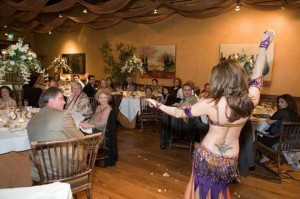Why I’m Obsessed With Posture
 By age 25 I had constant low-grade pain in my lower back. I knew that I should take it easy, but my career as a professional dancer was just beginning to flourish. Dance was my life, my passion, my happiness… a little pain wasn’t about to stop me.
By age 25 I had constant low-grade pain in my lower back. I knew that I should take it easy, but my career as a professional dancer was just beginning to flourish. Dance was my life, my passion, my happiness… a little pain wasn’t about to stop me.
In dance class I was taught that it was important to tuck my pelvis in order to protect my lower back. As a personal trainer I was also taught that a tucked pelvis was the safest way to do abdominal exercises. So I figured that my back problems were getting worse because I was not tucking my hips enough.
As my back pain worsened I began putting more and more emphasis on tucking my hips, but it didn’t help and soon I was canceling performances due to the pain. My lower back became very swayed and massive tightness developed in my hips.
My hips and lower back became so inflamed that some days I could barely function. I sought relief through physical therapists, chiropractors, massage therapists, medications, cortisone shots, yoga classes, and extended periods of rest. Some of these things helped more than others, but only temporarily. Chronic pain made me tired and grouchy and I continued to throw money at the problem.
When an MRI revealed two herniated discs in my lower back I lost all hope of ever feeling better. At 35 I envisioned the rest of my adult life being a downward spiral of pain and disability.
 But things started to click into place when I began doing physical therapy on the Pilates reformer with the amazing Teresa Maldanado Marchok MPT. The Pilates principle of a neutral pelvis helped me to understand that all those years of tucking my pelvis was exactly the wrong thing to do. Rounding the back exacerbates herniated discs and is a movement that should be avoided by people with that injury.
But things started to click into place when I began doing physical therapy on the Pilates reformer with the amazing Teresa Maldanado Marchok MPT. The Pilates principle of a neutral pelvis helped me to understand that all those years of tucking my pelvis was exactly the wrong thing to do. Rounding the back exacerbates herniated discs and is a movement that should be avoided by people with that injury.
My research on pelvic positioning led me to change my posture while dancing, while exercising, while sitting and even while sleeping. I now consider myself to be a student of posture and take classes in the Alexander Technique in order to learn how to release unnecessary tension in my body and to move with the lightness and balance that I once had. After years of misuse my body has a great deal of tension and inflammation, but it is steadily improving as I slowly relearn even the most basic movements.
 I can now teach a dance class without being completely crippled the next day. I don’t have intense muscle spasms when stepping out of my car. And I no longer feel that slouching forward is the most comfortable position when sitting at the dinner table.
I can now teach a dance class without being completely crippled the next day. I don’t have intense muscle spasms when stepping out of my car. And I no longer feel that slouching forward is the most comfortable position when sitting at the dinner table.
I now understand why other students of posture report being told that they look younger, thinner, more attractive, and more confident. When I am properly aligned, I feel these things too.
I am not perfect and old habits die hard. But I notice a significant difference in the way my body feels after I have been sitting improperly for a prolonged period of time. That alone is enough to motivate me to always strive for my proper positioning.
